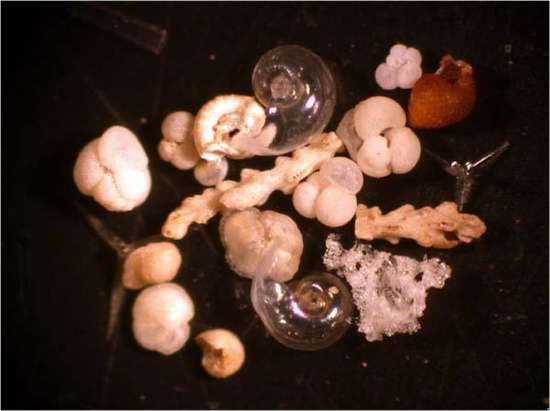
Foraminifera Notes

Foraminifera, informally called "forams", are members of a phylum or class of amoeboid protists characterized by streaming granular ectoplasm that, among other things, is used for catching food, and commonly by an external shell or "test" made of various materials and constructed in diverse forms. All but a very few are aquatic and most are marine, the majority of which live on or within the seafloor sediment (i.e., are benthic) while a smaller variety are floaters in the water column at various depths (i.e., are planktonic). A few are known from freshwater or brackish conditions.
Foraminifera typically produce a test, or shell, which can have either one or multiple chambers, some becoming quite elaborate in structure. These shells are commonly made of calcium carbonate. They are usually less than 1 millimetre in size, but some are much larger, the largest species reaching up to 20 centimetres.
Foraminifera are often found in the deepest parts of the ocean. Dying planktonic Foraminifera continuously rain down on the sea floor in vast numbers, their mineralized tests preserved as fossils in the accumulating sediment. Because of their diversity, abundance, and complex morphology, fossil foraminifera are useful for biostratigraphy, and can accurately give relative dates to sedimentary rocks. The oil industry relies heavily on microfossils such as forams to find potential hydrocarbon deposits. The evolutionary processes make the larger Foraminifera useful as index fossils for the Permian, Jurassic, Cretaceous and Cenozoic.